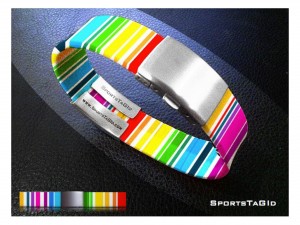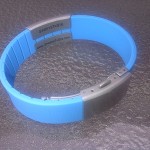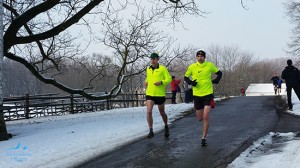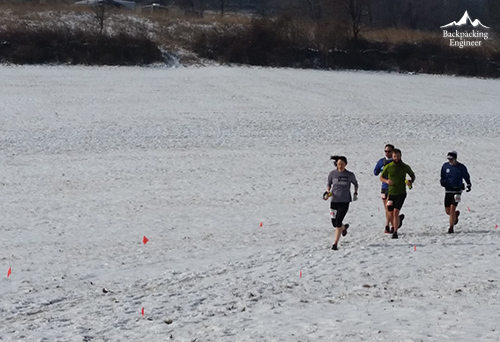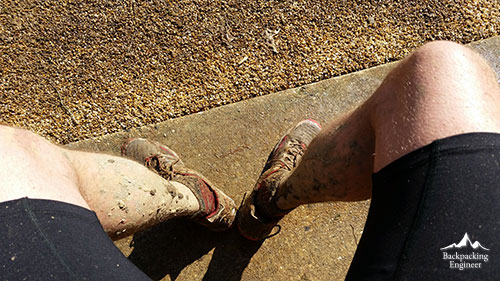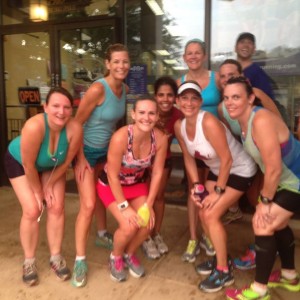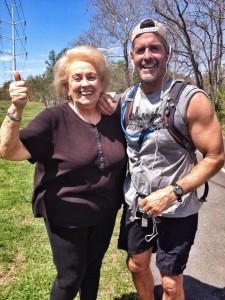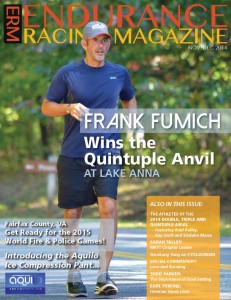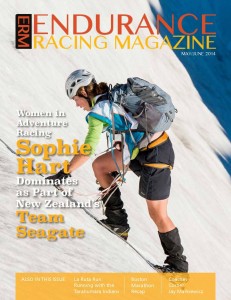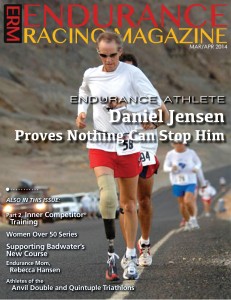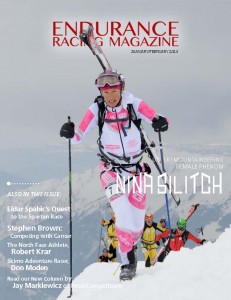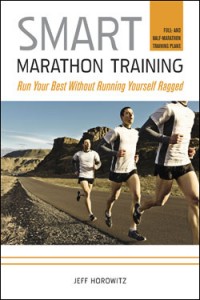 Please join well-known marthoner and author of Smart Marathon Training, Jeff Horowicz on Saturday, May 9th for a 5K on the grounds of RFK Stadium to benefit an HIV orphanage in Addis Ababa, Ethiopia.
Please join well-known marthoner and author of Smart Marathon Training, Jeff Horowicz on Saturday, May 9th for a 5K on the grounds of RFK Stadium to benefit an HIV orphanage in Addis Ababa, Ethiopia.
“As some of you may know, for over a year I’ve been involved with Race4Ever, a 501(c)(3) non-profit foundation that was created to help support youth charities. Last year I had the opportunity our target charity in Ethiopia – in fact, I took the photo that appears below and on our even website. These are amazing kids, and a very worthy organization,” Horiwicz said.
 Last year we produced a race in Addis to bring attention and funding to this orphanage, and this May 9th we’ll be producing a new 5K event here in DC. It is a timed event on a measured course, but it’s also family and walker friendly. There will be live music and food – including traditional Ethiopian cuisine.
Last year we produced a race in Addis to bring attention and funding to this orphanage, and this May 9th we’ll be producing a new 5K event here in DC. It is a timed event on a measured course, but it’s also family and walker friendly. There will be live music and food – including traditional Ethiopian cuisine.
To learn more about our organization, our target charity, and to register, please go to https://www.race4ever.org/.
And don’t forget to subscribe to Endurance Racing Magazine!
]]>SportsTag*ID Ultra Silicone ID Bracelets were to meet a growing number of Adventure/Extreme Sport Athletes as viable Medical ID incase of Emergency Response Code 3. Most importantly we set out to create visible, high quality ergonomic Sports ID Bracelets that are comfortable and performance orientated for Sports such as: Cycling ID, Runners ID, Marine ID, Athletic ID. Extensive research and development was done throughout a multitude of sport for over 2 years until we released our first ID on the world wide web.
The purpose of Medical Bracelets or Sport ID is to speak for you in-case of emergency if you could not speak for yourself.
SportsTaGID is the First ID company in the world to have created QR CODE ID Bracelets. Intended Only for Promotional Products and Event ID. Raising the bar once again our new Naked ID just turned the ID industry on it’s ear. There’s nothing like it because we just invented it.
We are the Official Custom Rider Bracelet ID supplier for bike-Pure who proudly support professional cyclists that ride in the Tour De France & Olympic Games. SportsTagID will be the first Sport ID bracelet worn at the 2012 London Olympic games. Watch for the bike-pure Blue custom SportsTaGID on all major cycling teams. Currently 6 World Champions & Olympic Athletes wear our ID including Sarah Kent, Ben Jaques, Travis Meyer & and 2 Time Olympic Gold Medialist Marianne Vos. It’s even worn by culinary Icon Mark Mcewan and the NHL’s Montreal Canadiens.
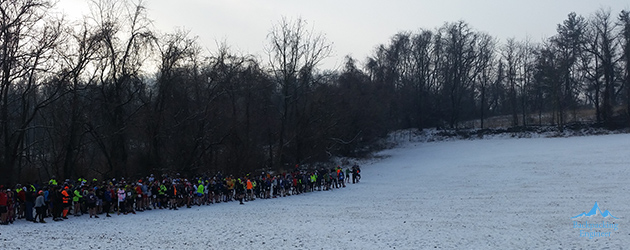
Russ Dresher escaped the New England snow (sort of), ran on some pristine single-track (kind of), fell into a relaxed, effortless pace (somewhat) and woke up the next morning feeling like a million bucks (not quite).
By Rush Dresher
If you are an avid Backpacking Engineer follower with a keen eye for detail you may have noticed the frequency of new blog posts have dropped over the past several weeks. You may also remember some random sentences thrown into recent blogs about some little side project I have been working on. Training for my first 100 mile ultramarathon. What’s that? You see the connection between the two? Bingo! This running stuff sure takes up a lot of time! In the coming weeks I plan to add some training updates to the blog, but for now here is a race report for my first ultra of the year.
The snow and cold has been relentless in New England this year. The backyard on the first day of Spring still has up to 2 feet of snow in some spots. Trail running has been tough this season with many hours spent running on narrow roads occupied by vehicles with pissed off drivers inside because some idiot is making the road even narrower. Looking to get in some foot-to-dirt contact time I set my sights on the HAT 50k in Havre de Grace, Maryland, somewhere between Baltimore and Philadelphia, home to Susquehanna State Park.
Friday March 20, 2015 – Day before Race
Havre de Grace, Maryland receives a late season snowstorm. The trail becomes blanketed with about an inch of snow. Further north, Falling Angel gets behind the wheel of our race mobile and begins the drive from Hell. Leaving at rush hour is never a good choice in New England. First up was the traffic jam in Hartford. Sitting in traffic, the snow from the south begins to make its appearance in the north. Roads become covered, accidents ensue and more traffic snarls are encountered. Night falls before even making it out of Connecticut making visibility even worse. New York proved to be even worse. Somewhere in New Jersey the snow turned to rain and tensions were relieved (both between us and the road and between Falling Angel and I). Well after midnight I finally get to grab some shut eye. Thanks love for supporting my crazy “hobby” and showing the drive from Hell whose boss!
Saturday March 21, 2015 – Race Day
I awoke after only a few hours of sleep to tight legs due to using the passenger side brake so much the day before. Despite being tired and tight I was excited to feel the soft dirt underneath my trail runners. Arriving at the course, the realization of dirt quickly faded as I sighted a remaining blanket of snow. On the bright side it wasn’t 2 feet!
I did the usual registration stuff and was completely confused when I was handed a cooler style bag. I never actually got anything before in past ultras. Shortly after I was standing in a snow covered field with close to 400 other runners awaiting the long anticipated word, “GO!”
At the shout of that word we were off running through the field following 2 merry men in Robin Hood style hats as they led us on a 1.4 mile out and back to spread out the herd. My plan was to keep those merry men in sight in order to position myself in the front of the pack and reduce my chances of getting stuck in a conga line later on. The plan worked as I never found myself in a conga line for the remainder of the race despite so many runners.
After passing through the start/finish area for the first time I began a 2.2 mile loop through a mix of fields and woods. Snow covering the trail and the conga line behind me I settled into my training pace of 5 mph. The short loop was over before I knew it and I was even slightly ahead schedule.
Passing through the start/finish area for the second time Falling Angel was waiting for me with encouraging words of:
“There you are! I was getting worried about you! You are behind schedule!”
I ran past listening to heckles from nearby runners such as, “How’s that for motivation!” and “Is she going to make you walk home to?” Meanwhile I’m trying to make sense of it all since I knew I was averaging about 6 mph at that point. Oh well, the race must continue. I was a little bit disappointed to see that the start/finish aid station did not have any food out yet so I sucked down a gel and moved on.
Next up was the first of two ~13.7 mile loops. A short field section followed by wooded single-track, I was loving the snow covered course. In fact I even said to myself, “I can’t believe my feet are still dry.” Then it hit. A knee deep stream crossing 4.1 miles into the race. From here on out my feet would be wet the rest of the day. After more rolling single-track I was at Picnic Area Aid Station #1 grabbing some PB&J squares and sour patch kids. I love sour patch kids when running!
Continuing the loop I noticed the snow was beginning to melt and the trail was becoming a nonstop mud pit. Good thing I enjoy running in mud. The rest of the day proved to be one muddy orgasm of delight as I slipped and slid every which way getting a good hip workout. Between Picnic Area Aid Station #1 and #2 the trail is a mix of woods and road. For road lovers, this is your chance to make up time. For me, it was a perfect time to settle into an effortlessly slow pace and check out the form of other runners.
Stopping at Picnic Area Aid Station #2 I would see FA for the last time as she was headed off to her cousin’s bridal shower an hour or so away. We said our goodbyes as I was stuffing myself with the best French fries ever. Period! I might come back to this race again just for the fries!
5.3 miles of rolling single-track, woods, fields and roads and I was back at the start/finish line for the third time. During those 5.3 miles I assessed what I needed from my drop bag, my pace, my health and my attack plan for the second and final loop since I now knew what to expect.
At my drop bag I put on new Darn Tough socks, slipped out of my C-lites and into my Helios. I knew everything would be wet again in just 0.7 miles, but what the heck I brought the gear so I might as well use it! Despite being Spring in Maryland I got chilled to the bone while stopped there. I was so glad to get moving again. I felt like I was backpacking in the shoulder season. In fact, my hands never really warmed up until the race was just about over.
The final 13.7 miles were enjoyable. I maintained my 5 mph training pace, had fun playing in the ever increasing mud pits and conversed with fellow runners as I picked off a handful here and there. The last 5.3 miles of the race I summarized my thoughts. Here they are.
The course was absolutely fantastic. The mud for me was fun, but I bet the race would be just as fun without it. The course is 100% runnable. There are no steep or long climbs which is a blessing and a curse depending on your self-pacing abilities. I did not find any part of the trail technical in fashion, but as everyone knows the notion of technical is very subjective. I’m not sure how you would ever keep your feet dry on this course. At the very least, there are 2 calf-to-knee deep stream crossings. My suggestion? Run right through those suckers without hesitation. It is much more fun that way. There was a little bit more road than I prefer but at least the traffic was minimal and the scenery was nice. The volunteers were great and the aid stations were well-stocked. A few minor comments about aid stations. Don’t expect food at the start/finish aid station the first time through. There was supposed to be an unmanned aid station somewhere after Picnic Area Aid Station #2. I never saw it. Not all aid stations are created equal. Picnic Area Aid Station #1 did not have any hot food to offer.
Crossing the finish line in 6:00:45 after 30.48 miles and 2,971 ft of gain with equal loss I was handed a hat and umbrella and pointed towards the food. This was good enough for 76th place out of 402 runners which is way better than I was expecting. One final thought. I would definitely sign up for this race again and the registration fee of $65 was well worth it.
Sunday March 22, 2015
I’m writing this blog as Falling Angel drives my butt home. Thanks again dear! My body is feeling pretty good but I do have some sore quads today probably because of all the self-braking going on in the mud. Today is active recovery day for me which is good because I am getting stiff sitting in the race mobile. Overall though I think I am on track to knock out a 40 mile race next weekend, but I will let my body and time decide that over the next few days.
Thanks again to all the volunteers for hosting such an awesome event. And thank you Falling Angel, my wife, love and ride bride (in more ways than one).
]]>
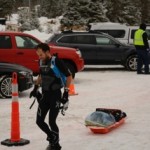

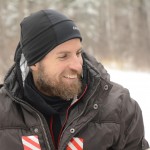
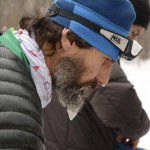
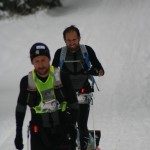
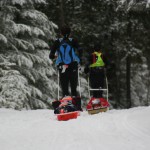
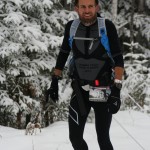
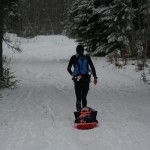
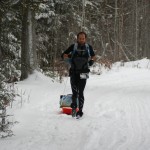
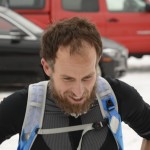
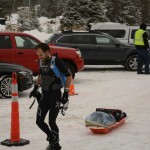
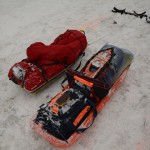
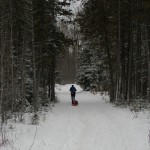

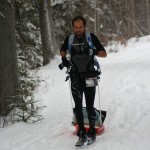
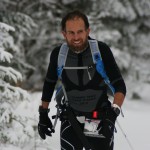
Beware of the Yeti
The Arrowhead 135 – Legend of the Northwoods
By Harvey Lewis
There is a legend and mystique to the Arrowhead 135. In the far northern stretches of Minnesota, just below the Canadian border, athletes have descended annually in the dead of winter upon International Falls, otherwise known as “Frostbite Falls”, for a race that will challenge even the most seasoned ultrarunner.
This past July I won the Badwater 135, listed by National Geographic as first on the list of the top ten toughest races on the planet. I have raced Badwater the past four years, drawn to it due to the extremes in temperature (Death Valley reached 134 degrees in 1913). The challenge of running 135 miles over three large mountains in one of the most picturesque places on the planet was also a tremendous draw. After winning Badwater, I wanted a new challenge – one that would require a new set of skills and would push me.
The Arrowhead 135 is the antithesis of Badwater. The Arrowhead Range is known for having some of the coldest winter temperatures on the planet (Tower, Minn., where the race finishes, holds the Minnesota record of -60 degrees in 1996). It’s incredible to imagine that air temperatures have ranged as much as 190 degrees between these two distinct lands – and that’s not taking into account the potential for wind chill or the super-heated blacktop in Death Valley that generates temperatures hot enough to melt shoe soles. I would be lying if I said the extreme cold didn’t leave me a bit on edge throughout the period of preparation. Additionally, unlike Badwater, where athletes have a crew to refuel them, the Arrowhead requires athletes to receive no outside assistance whatsoever. Athletes must carry all of their own materials, outside of what they might purchase at the one store (mile 36, Gateway Store, aid station one) and a 15-pound drop bag (mile 70, MelGeorge’s Resort). The final aid station is at mile 110, referred to as Ski Polk, that is expected to carry only water. There are three aid stations for the 135 miles to Fortune Bay Casino. Athletes have 60 hours to complete the race.
The Arrowhead 135 required a lot of research and gear. I read through many of the blogs and articles on the race website. I remember seeing the Arrowhead 135 advertised on the site as among the top 50 most difficult races. Parker Rios, a race veteran, was extremely helpful in giving me feedback on equipment and any questions related to the race. Parker, like many racers, dropped out his first year. He went on to win in 2013, an extremely demanding year with more than 10 inches of snow. I knew I had to exercise caution or I risked a DNF as well. Over the years, fewer than half of the racers have finished and the weather conditions can change substantially year to year. The Arrowhead is not cheap. The mandatory gear list and demands of the course required a -20 sleeping bag, sled with harness, and extreme weather apparel.
I love the heat…I don’t love the cold! I enjoy snow and winter scenery, but for decades I have internally bantered about the cold. I had to change my psychology. Typically, every winter I sign up for the local gym and watch movies three or four days a week while running on a treadmill to supplement my miles outside. This winter, I very rarely ran inside. I conditioned my mind to enjoy the cold. Once a week, I would run with less clothing than the weather demanded for a short set. I also took some cold showers and developed a cold weather mantra, telling myself, “I love the winter. I’m an arctic fox.” The strategy seemed to work; I became more immune to the cold. I really enjoyed running back and forth to work each day in it.
The challenge in my hometown of Cincinnati, Ohio this winter prior to the Arrowhead on January 26th was that we had only one small snowfall in November. I didn’t get to practice with my sled once. But it helped speaking with Parker Rios and trying to understand the best formula. I pulled a tire some, as I had in past years training for Badwater. I ran along the rocky shoreline of the Ohio River, which simulated the extra effort of running in snow and, at times, uneven stride. My final piece of training was pacing the Disney Marathon in Orlando, Fla., with our Clifbar pace team three weeks out. I really enjoyed seeing the park employees in full winter facemasks directing runners the morning of the race. Temperatures were in the 50s, but it looked as though some employees were prepared for a trip to Saskatoon, Saskatchewan. Stirring around the park, I ran into the Yeti and decided that he would accompany me at least in spirit to the winter wonderland of Northern Minnesota.
Race week came. Snow had come to the east coast, and perhaps the Yeti had a part in preventing my plane from ever landing in Cincinnati. Tracey Outlaw, a friend who came to check out the race, and I had to drive to Indianapolis to catch the last flight that would get us to the Twin Cities in time to catch the regional flight to International Falls. We caught a ride with his parents, who were heading to St. Louis. I hastily organized my belongings for the flight, and we rushed off. We had limited time and gas, but managed to make it just in time. On the flight from the Twin Cities to Hibbing and then onward to International Falls, I bumped into about a dozen racers – including my good friend Carlos Sa and his buddy Joao, who had just arrived from Portugal. After landing in International Falls, it became apparent that my sled was missing. The airline staff felt terrible, but it looked as though the sled would arrive by the next night (ahead of the 7am race start). I felt relaxed, and just chalked it up to the Yeti playing games with me. I would find a solution.
The town of International Falls is quiet, but there is a unique winter culture. I enjoyed spending time in town talking with the locals, including Race Director Ken Krueger. I asked Ken why he listed the Arrowhead as one of the top 50 most challenging races on the planet, and he referred to a nice book on adventure races on the table next to him that had the Arrowhead listed. I met other race volunteers. The guys with the gear check could have served as drill sergeants in another life; but they made me laugh, and I could understand only after racing the vital nature of each piece of gear. I had brought small blinking lights from Badwater that would be virtually invisible on a snowmobile trail with all of the snow and the snowmobiles zooming along at 50 miles per hour. So we had to scramble to get new lights. Fortunately, another racer gave me one, and a volunteer another.
The sled arrived at 10:30pm. While I wasn’t allowed any assistance during the race, my father, his friend Ernie, as well as my two friends Tracey and Andy Lohn came for the extended weekend adventure. My father and Andy helped to assemble the sled to my poles that would connect to my harness as I packed my food. We turned out the lights around midnight. I saw an extra carabineer dangling on the front of the sled. I said, “What’s that for?” My father said, “That’s in case something breaks and you need to use it.” We went back and forth a couple times; I really didn’t want any extra weight…my sled already weighed over 40 pounds. Still, I left it there, feeling the gravity of the days organizing and ready to hit the sack.
I awoke the next morning to a new snowfall of a couple inches. We made our way the half-mile to the start from our 50’s-era motel, one of many that line the strip to the border. Excitement filled the air; but there was an unusual warming effect, with temperatures expected to reach higher than usual. It was ironic that the temperature in my hometown of Cincinnati, Ohio was actually expected to be cooler than International Falls over the period of the race. This gave me a smile. I got to the start and quickly attached my sled. While I trained very hard and seriously for the event, the next five minutes would be the first time I practiced with the sled. I ran a couple 30-meter jots around the parking area, and the gear seemed comfortable enough. I debated starting with fewer layers and feeling cooler at the start, because I was concerned about sweating and becoming chilled later. My father said I should aim to be comfortable. I didn’t have to think very long about it and agreed.
I heard the final calling out for the fat tire bike start. Lights were blinking everywhere in the darkness. It looked like a hundred patrol cars with blinking lights. You could see the anxiety and anxiousness in the faces of the other racers. I felt some myself; 135 miles is quite a distance, especially pulling a 40-pound sled in mushy snow.
The cyclists and skiers were off. Four minutes later, the call was made and the runners dispersed into the darkness. It was fun being assembled as a mass; there was a great degree of energy and movement at the start of the race. Still, I tapered my ambition. I knew the pace for the record, and after 40 minutes into the race I knew we were all well ahead of it. I settled into a comfortable stride with my Newton BOCA AT trail shoes and tried to relax. By an hour into the race, I had stripped down to just a single layer of 2XU compression clothing. I took my hat and gloves off. I felt comfortable in the cool of Minnesota.
Grant, the Aussie who finished 2nd the past two years at Badwater, along with another runner who I would later learn was Jan Kriska, disappeared far into the distance. They were probably nearly a mile ahead after an hour and a half. In preparation for Arrowhead, I had visited Mr. Miyagi (aka Andy Shetterly) – a local legend in massage. Andy always found a way of injecting strong advice. The week of the race, I believe he almost purposefully put me in the path of one of his patients, a Vietnam veteran named Tim. Tim wore a hat that resembled Indiana Jones and told me of his adventures to the Hudson Bay. It was apparent he’d had adversity in life, though we didn’t discuss it; he was in a mechanized chair. But he didn’t seem phased in the least. When I asked if he had any thoughts on the race it, all led back to one word: “Discipline.” I thought of that word as I maintained the pace into seventh place, a small dot along the vast wilderness of pristine pine trees and the narrow snowmobile channel that parted it.
Not long after the first of daylight, I saw a turn-off to the right with markers. I was confused for a moment; the three or four runners within eyesight were going straight. The thought of taking a wrong turn made me cautious. A runner was perhaps 100 or 200 meters back, and I slowed for him to catch me so I could compare thoughts on the turn. It turned out to be a Swede, Marcus Berggren, calmly making treks. He agreed the marking was odd, but had a nice GPS unit with a map; he calmly asserted we were heading in the right direction. I had gotten lost on a 50-miler in December with a large field of runners in an area that wasn’t remote. Getting lost really was tough, especially mentally, plus having to cover more distance. This was in the back of my mind. Marcus and I talked a little; he said he was disappointed about the weather, that he had expected much colder temperatures. I mentioned the amazing scenery in the moment and noted that the course would still offer some good challenges.
Soon after, I felt something snap on my harness and the weight of the sled pull to the right. I looked down and saw that a piece was missing; my pole was no longer attached to my sled. The Swede passed me that moment, with a sleek sled that looked considerably lighter. The part that had fallen off my harness was nowhere to be found in the fresh layer of snow. Fortunately, my father had insisted I take the extra carabineer. I had to laugh at myself that he was right; but it also concerned me that I had made it not two hours and the Yeti seemed to have taken a poke at my sled. Keeping the sled intact and finishing was of utmost importance, and it worried me for a minute. Still, I tried to get focused again on the trail ahead. The Swede had put 400 meters on me in the time I fumbled around with my sled, and I didn’t want to waste any more time.
After another hour or so of keeping a moderate pace and trying to keep the next runners within sight, the flora began to change. The pines were stunning. We took a left turn and entered an area where not a single tree was taller than myself. I loved the trees’ stunted appearance. As far as the eye could see, all that was visible were these skinny, short pine trees that seemed perfect for the landscape of a blockbuster film. Spaniard Jorge Rufat-Latre caught up to me then, and we were in awe of our surroundings. We laughed and chatted. I told him I thought the others were out too fast and that we were still on record pace. Jorge impressed me with his strength. We were both vying for eighth place, but I thought he would back the engines down. He seemed surprised to be amongst the leaders and comfortable to merely finish the race. Still, what he said and what he was doing seemed entirely different. He appeared determined, and I was happy to have him nearby – especially with my concern of getting off-course.
I also caught up to my friend Carlos Sa, from Portugal. It was impressive that he had just flown in from Portugal the day prior. I was concerned because his friend Joao, also from Portugal, was on skis and looked to be having a lot of difficulty at the start of the race. The fewest number of athletes have succeeded with skiing the race; not many more than a dozen men, and only one female. Carlos is an amazing endurance athlete, but I could tell that he was having a tough time. His sled seemed to be sinking into the fresh snow more than others, and it was adding more poundage to pull.
We spread out before arriving at the first aid station. A cyclist was coming toward me from the trail to the right and I saw a runner ahead to the left. I yelled toward the runner, asking about the directions; it turned out to be the Swede. He was friendly enough to point in the direction to the right. As I finally neared the store, Jan, the other runner with a shaggy beard like mine, passed me going the other direction. We gave each other a competitive look, indicating that it was on.
I entered the store and grabbed as many calories as possible: electrolyte drinks, soda, some more chips and an egg salad sandwich. I saw Grant and asked him if he was ready. He replied with a solid Aussie accent and his normal spunky demeanor, “I’m always ready!” I knew Grant from Badwater, and I was hoping he and Carlos would join me for the next segment. Given my lack of knowledge of the course and the new element of the cold, I felt we would do better running together. But I was ready and they were still working on organizing, so I continued on. As I departed, I thought about the scene inside the store. It looked a bit like the fallout from a battle. The runners and some of the cyclists were working to recuperate and looked exhausted. While I was allowed no outside assistance, my father and friends were at the station along with a couple dozen onlookers to give some cheers as I raced out. I moved into third place.
Jorge was doing extremely well in the race. He managed to catch up with me, and again, I was impressed by his persistence. I was assured at this point that it was going to be no easy race; I had to dedicate every fiber of my focus and energy. Carlos Sa also caught back up to the group. For hours, we rotated back and forth as darkness permeated the depths of the forest. I was holding a consistent speed and felt we were gaining on the leaders. Finally, I saw the next racer’s light ahead. We had passed a number of cyclists by this point as well. It was particularly difficult for them to climb the hills, although they floated down them.
Once Jan saw us, the race was on. We staggered up hills that surpassed my expectations across the full second half of the course. We battled for hours pushing ourselves to utter exhaustion. Jan had looked wiped out when I initially caught up to him, but he was tough; he wasn’t giving up. We shifted positions between second and third more times than I could count throughout the night. One of my favorite stretches was across a sizable frozen lake before MelGeorge. Jan had a lead on me, and I really put on the speed to catch him right before the second aid station. When I arrived, I learned the Swede had just left eight minutes earlier. The lodge was a welcoming oasis, but I felt I had no time to rest if I was to make a go for catching the Swede. After only a couple minutes, I left in second place, and it looked as though Jan was going to take his time resting.
Leaving the small glimpse of civilization, the area felt isolated and a million miles from Cincinnati. I tried to calm my breathing, maintain stride and focus on the Swede ahead. Still, my energy was waning, and I felt tired. Bright lights from my body illuminated the darkness, but at times, the forest was eerie. As I glanced over my shoulder, I saw a runner: Jan had caught up to me. Again, we were emblazoned in a game of cat and mouse…but after a couple of hours of warring with each other, we finally relented. I believe we both had the same idea at the same time to call a truce; we thought it would be better to work together than to out-mouse each other. It became extremely helpful over the final 50 miles – I became severely sleep-fatigued in the middle of the night, and having Jan’s blinking light ahead really helped me fight the urge to pull over and dive into the comforts of my -20 sleeping bag. I proved to be useful to Jan as well, when his light went out. It was amazing how dark it was, and how difficult to replace the batteries in the cold of the night. Having my light was vital. We got into a rhythm of teamwork, alternating as leaders. The most valued lesson of the race was watching Jan sled down the hill. He flew! I had no idea that the sled-riding could be such a key part of the race. I have always been a fast downhill runner, and I ran down all the hills. It was too difficult to detach and ride down the hill with all my gear without breaking the poles connecting my sled to harness. In hindsight, sledding downhill is the most fun aspect of the race and the key ingredient for any chance of breaking the new record set by Swede Marcus by nearly three hours. Jan and I continued our forward progress, but slowed considerably.
The darkness of the second night enveloped us. With eight miles to go, I turned and saw a light from another athlete flickering in the distance behind us. I thought it was another cyclist, and it seemed they were catching us quickly. Jan and I were beat; but when the athlete got about 100 meters from us, I knew for certain it was a runner. I told Jan, “We need to go now, like never before!” We ran as if we had seen the Yeti in the flesh. Our adrenaline fired, and we ran sub nine-minute miles. It may not seem like much, but after more than 37 hours running in the soft snow, we were going all-out. To the Minnesota racer who nearly caught us, it appeared as if we were dancing, our lights shaking as we darted ahead. We couldn’t tell how far back the next runner was, but we continued at an all-out pace and shouted positive encouragements to each other. When I looked back again, all I saw was blackness.
We never really knew how far back the next racer was. When we saw the lights of the Fortune Bay Casino, we weren’t sure we had actually arrived. Perhaps one might think the finish anti-climactic – but Jan and I were elated. After all, we had experienced running half of the race together, and we were determined to cross the finish line together. We sprinted across the finish line holding our arms up together in victory, and tied for 2nd in 38:45. The Fortune Bay Casino was pure paradise. It felt like winning a hundred million dollars to get into a warm bath with mineral salts in a comfortable suite with unlimited food and drinks.
The next morning I talked to Pam Reed, who has raced Badwater 10 times and won Badwater outright, racing Dean Karnazes back in his heyday. She said Arrowhead was the toughest race she had ever experienced. For me, Arrowhead was really tough to prepare for and adapt to; it’s significantly longer than any hundred-mile race like Western States, and even the 135 miles of Badwater because it’s along a snow-covered snowmobile trail, pulling a sled. Still, I think the toughness of races at times has to do with the runner’s ability to adapt to different conditions. For a racer who prefers cold or heat, the opposite extreme can be the toughest race in the world. I saw the race director the next day, and suggested that perhaps his race was tougher than the top 50 in the world. But I plan to return.
]]>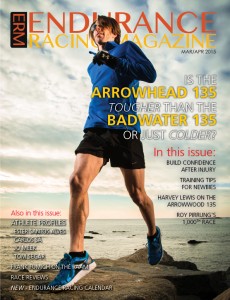 Newbies: We Heard You
Newbies: We Heard YouThe magazine was fortunate to receive emails from some of our subscribers telling us what they want. And what they want is more information on training – especially for new endurance runners. This month, we feature articles from veteran athletes with a lot of
races and experience under their belts (shoes?). These athletes – Jeni Goodwin, Roy Pirrung, Harvey Lewis, Tom Segar, Jay Markiewicz and others – have shared their perspectives, advice, and personal adventures to help fellow athletes learn the tricks of the trade.
Some of our athletes, like internationally reknowned Carlos Sa’ of Portugal and endurance runner Kevin Fowler of Michigan, USA, have been instrumental in designing their own races. When an athlete moves to the roll of Race Director (RD), there is an opportunity to not only race the way you want to, but to enjoy the fruits of your labor along the way. Carlos Sa’ created the Peneda-Gerês Trail Adventure® because
he wanted the world to see his beautiful county, and he wanted to showcase the beauty of Portugal to his own countrymen. As for Kevin Fowler, he was driven to race the distances he wanted to race. After consciously deciding that not all races must be long endurance
races, he wanted to focus on a range of stage races which could enable athletes to choose distances amenable to them.
We showcase a variety of athletes, such as Jo Meek and Ester Santos Alves, who were invited to run the Peneda-Gerês Trail Adventure® race this April. The women each bring a different perspective to the sport: Meek, from the UK, is a dedicated runner through and through, while Alves, from Portugal, began her endurance career rowing, then cycling, then running. She claims she’s drawn her strength and ability from having races in other disciplines, before finding joy in endurance distance running. And some of our pioneers, like Frank Fumich of Arlington, Va., are competing in the Race Across America (RAAM)
to push their physical limits; but Fumich tells us he’s also running for Ryan Diviney, a boy who was badly
beaten at college and suffered a traumatic brain injury.
We are introducing something new this month: a race calendar – another item our readers have asked for. The calendar and its corresponding race ads, are meant to keep our athletes “in the know” about upcoming events. This list will be maintained and updated regularly – so if you know of a race, let us know and we’ll work with you to market it.
Enjoy this issue – I’m proud of what we’ve accomplished for you this edition.
Regards,
Alix
Alix Shutello
President and CEO
[email protected]
Not a subscriber? Click here to subscribe!
]]>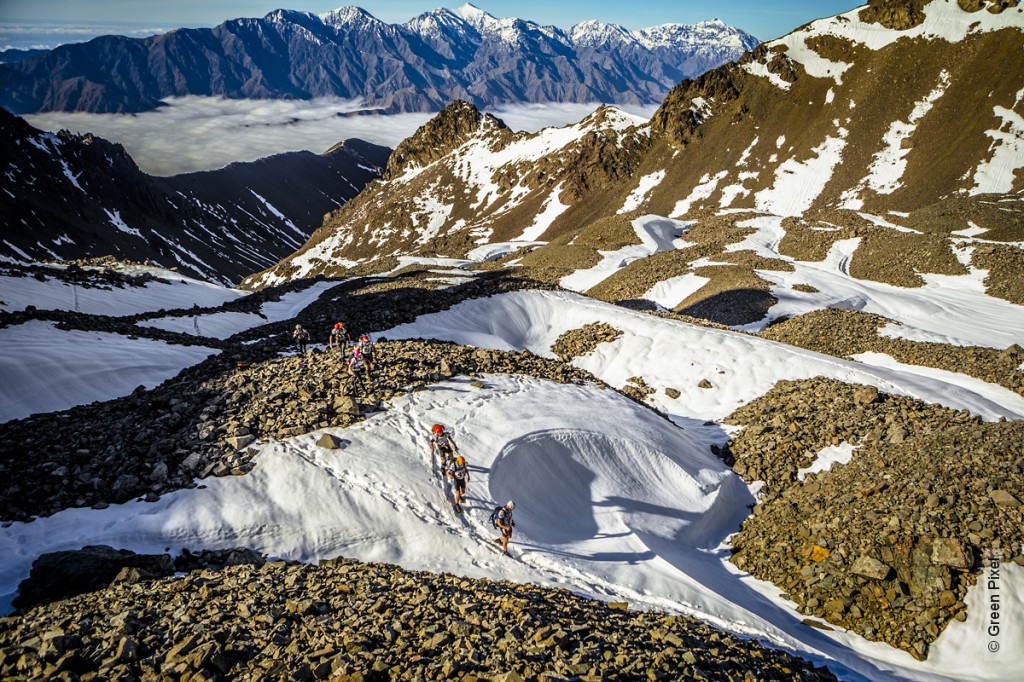 GODZONE ANNOUNCES LEADING NZ CHARITY CURE KIDS AS RECIPIENT
GODZONE ANNOUNCES LEADING NZ CHARITY CURE KIDS AS RECIPIENT
GODZone as announced in December 2014 that leading New Zealand child health research funder, Cure Kids, has been named as the recipient charity for the adventure-racing event taking place in Wanaka in March 2015.
Race Director Warren Bates says GODZone is proud to be associated with Cure Kids, who fund vital child health research in New Zealand.
“ GODZone is now in its fourth year of operation and we have been considering for some time how we can use our international platform for the greater good. By choosing Cure Kids as our official charity recipient we aim to help raise funds and awareness of the vital –child health research they fund each year.”
Over 200 adventure racers are competing in the event next year, including reigning world champs Team Seagate from New Zealand, and Mr Bates says there will be plenty of opportunities for teams to help the cause.
“The competitors certainly face some tough challenges out in the wilderness and around the non stop course. However, this is nothing compared to the challenges some children and their families face on a day-to-day basis. Our alignments with Cure Kids is something that hopefully will inspire our adventure racing community to rally behind and help to raise funds for this important research. We will be actively encouraging teams and their supporters before the event and during via our live website to donate.”
Cure Kids CEO Vicki Lee is hugely supportive of the partnership and says being the recipient charity of GODZone is “simply sensational”.
“It?s always humbling when people are prepared to put their body on the line and stretch their limits both physically and mentally to raise money for Cure Kids.”
“Our own Kiwi kids will be the ultimate recipients of their hard work, as the dollars raised in the GODZone race will be directed to improving the health of New Zealand children. A cure in New Zealand is a cure world-wide” says Ms. Lee
Cure Kids funds research into cures and better treatments for a wide range of childhood illnesses. These include cot death (SUDI), stillbirth, leukaemia, rheumatic heart disease, asthma, inherited heart conditions and mental health conditions.
The GODZone event can be followed through out via the godzoneadventure.com website where each team is tracked by a locator beacon. Race Director Warren Bates says it promises to be one of the most compelling events to watch both for the winning teams but also to see how much money will be raised for Cure Kids.
“We really want people to get behind Cure Kids and all the teams as they tackle this massive challenge. Today we launch our Cure Kids landing page www.godzoneadventure.com where people can find out more about the campaign and how
they can get involved.”
For more information on Cure Kids go to http://www.curekids.co.nz/GODZone or go to http://www.godzoneadventure.com or the Facebook page http://www.facebook.com/godzoneadventure
For more information please contact:
Media Liaison
Margo Berryman
Ph: 021 246 3342
[email protected]
http://www.godzoneadventure.com
]]>After managing this magazine for the past few years I want to give folks an opportunity to buy issues and print them. Please read this post carefully:
We have not designed our past issues for print.
Let me repeat:
We have not designed our past issues for print (they were designed and maximized for digital display ONLY. Therefore, should you decided to purchase a printed issue of Endurance Racing Magazine, including the absolutely fabulous Jan/Feb 2015 issue featuring Jennifer Chaudoir, you will be in for a surprise. The print product will have some content cut off the cover.
We of course are going to alter our cover design slightly but since we’ve gotten so many requests to offer print pubs, we want to give you all an opportunity to purchase our publications.
Please visit MagCloud – our partner in this endeavour. Instead of purchasing a $10 annual subscription you can purchase issues one by one.
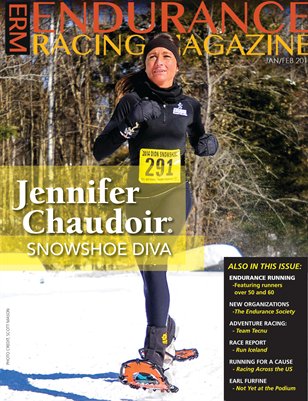
Back Issues 2015: Endurance Racing Magazine Jan/Feb 2015
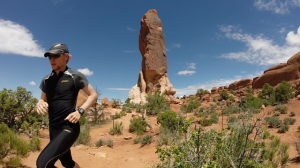 Documentary on 500 miles in 47 days in 26 national parks for 20 amazing minutes on trail running.
Documentary on 500 miles in 47 days in 26 national parks for 20 amazing minutes on trail running.
This 20-minute short documentary offers a total immersion from the double crossing of the Grand Canyon to the volcanic areas of Yellowstone stepping by the lunar landscapes of Arches. Between the bears in Sequoia, the snowed trails of Pikes Peak and below sea level at Bad Water in the heart of Death Valley, this video presents trail running from every angle.
Independently made and crowd-funded, this documentary project already received a warm welcome from the running magazines in the US, Canada and France, but also from professional trail runners.
This project is built around the videographer’s sharing his passion of running. This documentary was released on Tuesday 4th November 2014.
To learn more, contact:
Guillaume Arthus
Passionate trail runner
[email protected]
Coming Full Circle
By Alix J. Shutello
This issue is special to me. After three years of covering the Double, Triple and Quintuple Anvil races in Lake Anna, Virginia, I feel as if I was indoctrinated into a small community of superstars that are so unique in their athletic ability that it just stuns me. In fact, after observing many of these athletes in person or on Facebook where I was collecting photos, data, and other types of information I realized something profound.
What is a Double, Triple or Quintuple? It’s slang for distances past the Ironman, so a Double is a 2 times Ironman distance. A Triple is a 3 times Ironman distance, and a Quintuple is a 5 times Ironman distance.
In this issue, we cover a few of the athletes who competed in Lake Anna. Frank Fumich, who won the Quintuple Anvil race, will tell you that he does these types of races to push his personal boundaries. We at ERM want to dedicate this issue to Fumich who lost his mother, Marie Fumich, in October 2014, just weeks after the Anvil races. To Frank and his family, we share our deepest condolences.
We cover Anvil veterans Kay Scott and Brad Kelley, as well as Double Anvil newbie Siobhan Maize. ERM also wants to throw a shout out to the number-one internationally ranked Kamil Suran, whovolunteered the whole week at Lake Anna and went on to win the Monterrey, Mexico Deca Ultra this November.
To mix things up we have a few guest columns; one from Ryan Crosswell, an attorney and endurance athlete who tells a heart-wrenching tale about love and running. We also have another submission from our favorite cylco cross athlete, Gwokang Yang, who has done an excellent job at writing about the sport and how his fitness has increased through time. You will find his most recent race report exciting to say the least.
Now, onto another new section – for the last issue we introduced our new Regional section and covered DC Capital Striders founder, Rick Amernick. This issue, we are introducing endurance runner, Sarah Talley of Moms Run This Town, a national organization for which Talley has been an integral part of. In her story, we learn about how an athlete with experience running marathons in Asia, comes to states and becomes the founder of Virgina’s largest MRTT chapters. She is role model for all of us from the Vienna-Oakton chapter and beyond.
Also in new pieces we feature well known Ironman, Chris McDonald who founded Big Sexy. He wears a new type of compression gear developed by Aquio. This gear, meant for all types of athletes allows people to pull on compression pants which have veins which allow cold water to go through –so you get the feeling of ice and compression without sitting in icebath.
And finally, two of our long time contributing authors, Todd Parker and Earl Furfine contributed on special training and endurance topics. Parker covers the art of goal setting while Furfine describes the motivation and partnership of his long-time friend Tim Howard, who suffered a heart attack while in the water and continued on through his triathlon.
Thank you for your support! We hope you love this issue.
Not a subscriber? Click on the Buy Now button on the right side of the page for an annual subscription (6 issues).
Alix
]]>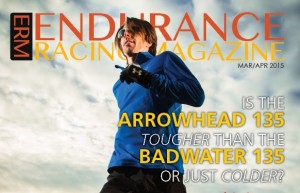
Subscribe to Endurance Racing Magazine
Welcome to Endurance Racing Magazine (ERM). This magazine is published bi-monthly and covers local, regional and international news, features, and athlete profiles. We also provide articles from well known athletes, trainers and coaches who provide coaching, training, and performance-based advice.
ERM started in 2000. It is a subscription-based magazine. All proceeds go toward supporting the staff and article development. We are also looking to give back and want to work with our readers to find plausible causes that we can give money to.
This magazine is read by people all over the world. For advertisers, this is a great way to showcase your company all over the world. Our Facebook presence is extensive; for we have over 7,000 likes and/or friend as well as 40 subgroups of ultra communities who have tacked themselves onto our profile pages.
Over the years we provided a lot of services for free but we cannot afford to do that anymore. All advertisers must pay a small fee to advertise in the magazine. Normally, that fee is as small at $100-$250 per issue.
Please email me at [email protected] if you would like any more information.
2014 Issues
]]>
